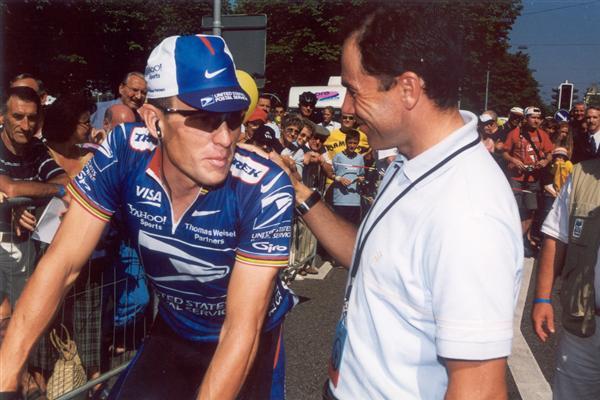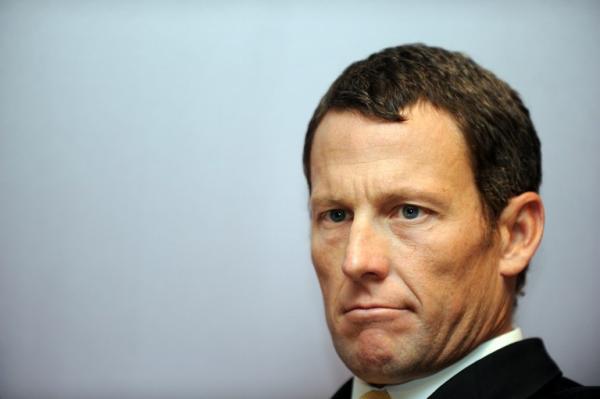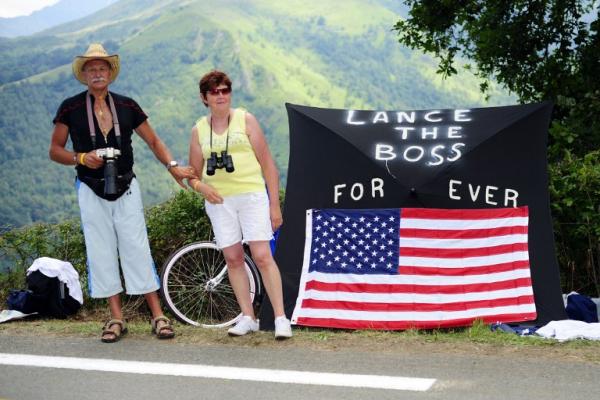Legal opinion: Armstrong's arguments against USADA
Arbitrators, not review board will determine outcome




Last week Lance Armstrong's attorneys issued a stinging opus in response to USADA's new charges of doping and conspiracy against the rider. Cyclingnews received this analysis of the case from San Francisco attorney Vitaly Gashpar, the Substantive Law Editor of The Recorder.
The 11-page letter sent by Lance Armstrong's attorneys to the Review Board of the U.S. Anti-Doping Agency is replete with arguments heard many times in the past: Armstrong never failed a test; the witnesses against him have been coerced and have less than stellar reputations; the USADA is going after him unfairly; etc. However, among the shtick we're used to hearing over the years, Armstrong's attorneys raise several points that may set the course of this investigation and subsequent hearing.
Where's the evidence? Can USADA withhold it from Armstrong?
ii. The Review Board shall be provided the laboratory documentation and any additional information which USADA deems appropriate. Copies of this information shall be provided simultaneously to the Athlete or other Person and the Athlete or other Person shall be entitled to file a response with the Review Board. The Athlete’s or other Person’s name will not be provided to the Review Board by USADA and will be redacted from any documents submitted to the Review Board by USADA. (from USADA Protocols)
A chief complaint from Armstrong's lawyers is that they were only provided with the laboratory data from 2009 and 2010 by USADA, and no evidence supporting any of the other myriad allegations. Is this allowed?
Under Protocol 11 of USADA: "The Review Board shall be provided the laboratory documentation and any additional information which USADA deems appropriate. Copies of this information shall be provided simultaneously to the Athlete..."
So USADA has discretion as to what information it will provide to the Review Board, but thereafter does not have the option to not provide the same information to the athlete, which leads to several possible conclusions. First, the USADA only forwarded to the board 2009 and 2010 data, providing the minimum which would lead the review board to recommend a doping violation, keeping the rest of its evidence to itself. Second, as Armstrong's attorneys argue, the USADA is withholding information relevant to the investigation from Armstrong. Or third, the review board, pursuant to §11(v), requested additional information from USADA which the USADA was only required to provide to the review board and not the athlete.
Get The Leadout Newsletter
The latest race content, interviews, features, reviews and expert buying guides, direct to your inbox!
The charges brought by USADA go as far back as 1998, so presumably it has submitted – in one way or another – all relevant information with regard to those violations to the board. If the information relating to pre-2009 allegations was in fact provided in response to a review board request, it appears the USADA has found a loophole in its protocol to withhold information from Armstrong.
The USADA rules suggest that it is ultimately free to disregard the recommendation of the board. However, per §11, evidence with regard to all violations within the purview of USADA must be submitted to the board for review and simultaneously provided to the athlete. It appears that at least on some level, the USADA was not fully compliant with the initial stages of the review process or played fast and loose with its own rules.
(Note: Cyclingnews believes USADA is using the following rule, part of the American Arbitration Association's Supplementary Procedures for the Arbitration of Olympic Sport Doping Disputes to limit the scope of the information provided in order to protect the identity of witnesses:
R-18. Exchange of Information
a. At the request of any party or at the discretion of the arbitrator, consistent with the expedited nature of arbitration, the arbitrator may direct (i) the production of documents and other information, and (ii) the identification of any witnesses to be called.
These are old charges, what about the eight-year statute of limitations?
ARTICLE 17: STATUTE OF LIMITATIONS
No action may be commenced against an Athlete or other Person for an anti-doping rule violation contained in the Code unless such action is commenced within eight (8) years from the date the violation is asserted to have occurred. (WADA Code)
The board just completed the review and recommended to USADA to charge Armstrong with doping and related conspiracy charges. In accordance with WADA code, there exists a statute of limitation of eight years from the date the violation is alleged to have occurred. Therefore, even if charges are filed, the USADA will only be able to go as far back as 2004. Article 17 of WADA is one of the provisions that must be adopted by USADA without any substantive changes per WADA article 23. Unless the USADA can persuade a panel of arbitrators to disregard the statute of limitations.
The USADA is relying on the decision issued by the American Arbitration Association in the case of Eddy Hellebuyk, a marathoner suspended from the sport on doping charges, where the AAA determined that due to prior perjury, he would not be able to avail himself of the statute of limitations. The only matter in which Armstrong has given testimony under oath is in the litigation against SCA Promotions, which he ultimately won. That testimony was given in a deposition, not before the AAA panel. The Hellebuyk was a case of first impression before the AAA in this context, and it is unclear whether a panel of arbitrators will be willing to extend it to the facts of this case.
After all, assuming Armstrong's SCA Promotions testimony where he denied doping was false, it was not actually given to the panel, nor was the testimony given to escape doping charges, as it was in Hellebuyk's case. The arbitration panel in Hellebuyk's case appeared to be focused on those facts to find the statute of limitation inapplicable. Not to mention that the USADA will have to first prove that the testimony given by Armstrong was false. This was easy in Hellebuyk because he subsequently admitted to lying in the initial hearing.
Notwithstanding the above, there is another legal wrinkle that could result in a AAA panel finding the statute of limitations is inapplicable: equitable tolling. If an accused acts in such a way as to prevent the discovery of the harm done (this has to go beyond merely being silent about it) - meaning the instrumentalities under his control were used to thwart the finding of a violation - equitable tolling could come into play to extend the statute of limitations beyond the statutory limits.
However, for this to happen, the USADA will have to fill a lot of blanks. Not only will it have to affirmatively prove that Armstrong is guilty of the violations charged, but it will also have to show that he somehow acted to thwart previous investigations, and but for his actions, the doping allegations which are now outside the statute of limitations would have been discovered earlier. That won't be easy, as under AAA rules, Armstrong does not have to testify in these proceeding.
Lastly, if the USADA is successful in proving that Armstrong was part of an ongoing doping conspiracy – one of the charges against him - the statute of limitations may not be applicable if it is proven that the conspiracy continued into the limitation period. In other words, if USADA will be able to show that Armstrong’s doping violations stemmed from an ongoing conspiracy that started in 1998 and continued to 2010, Article 17 of WADA doesn’t even come into play.
Where does the case go from here?
The hearing is set for November and will be before the AAA in accordance with the rules governing arbitration of Olympic sport doping disputes. As is typical with hearings before the AAA, the legal rules of evidence don't apply, and the arbitrators are free to consider and admit any material deemed relevant. The only requirement being that the presentment of evidence be before all of the arbitrators and the parties. Meaning that whatever evidence USADA may wish to present to AAA will have to be presented to Armstrong, whose defense team will certainly have a run at it.
Given that the arbitrators are not selected by the USADA alone, but are neutral "judges" selected by both parties (there is a chance that it will be heard by only one arbitrator, unless an election is made to have three), the objections to evidence raised by Armstrong's attorneys may play a role and the panel may reject some of the evidence.
With that said, it is likewise possible that despite the less-than ethical/legal collection of evidence charged by Armstrong's attorneys in the letter to the Review Board, it will still be considered by the arbitration panel in reaching its decision.
This is not an easy case for the USADA to prove by any stretch of the imagination. The USADA faces three main obstacles: first, it will have to meet a heavy evidentiary burden to persuade the AAA panel to disregard the statute of limitations; second, it will have to persuade the AAA to admit into evidence information that could have been collected in violation of USADA protocol and/or U.S. Federal Rules of Criminal Procedure; finally, it will have to persuade the AAA to give adequate weight to testimony of witnesses who may have previously been dishonest about their own doping conduct.
(All evidence will be made public at the arbitration hearing, should Armstrong agree to one, including witness testimony. - Ed)